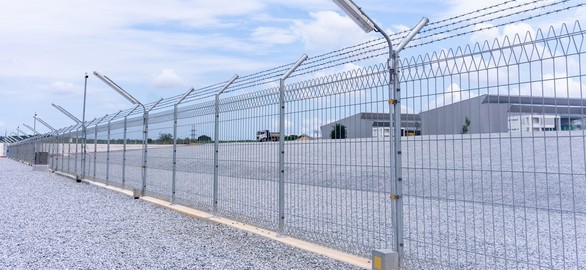

25 Video Surveillance Installation Errors to Prevent for Enhanced Security
When it comes to effective video surveillance, simply installing security cameras isn't enough. To truly protect your business, it's vital to properly set up and maintain your surveillance systems. Understanding common mistakes can significantly enhance your security measures, allowing your cameras to provide the peace of mind you desire.
Many newcomers to video surveillance encounter avoidable pitfalls during their initial installations. This guide will help you navigate these challenges, ensuring that your investment in security yields optimal results.
1. Insufficient Planning
Jumping into camera installation without a comprehensive plan can lead to confusion and ineffective security measures. Set clear goals and objectives for your surveillance system, whether it’s deterring theft, monitoring access points, or enhancing overall safety. A well-defined strategy allows for better resource allocation and addresses your most pressing security needs.
2. Using Residential Cameras for Business.
Many mistakenly employ residential security cameras in commercial settings. While both types monitor activity, they are designed for different environments. Commercial cameras are typically more robust, featuring weather-resistant coatings and vandal-proof casings. Using residential cameras can result in poor coverage and reduced security efficacy.
3. Choosing the Wrong Camera Type
Not all cameras are suited for every situation. Assess your surveillance needs thoroughly to select the appropriate camera types. Options range from indoor dome cameras to outdoor bullet cameras. Determine if you require advanced motion detection, low-light capability, or high-definition zoom to match your unique environment and security risks.
4. Relying on a Single 360-Degree Camera
While a 360-degree camera may seem like a cost-effective solution, it often fails to provide complete coverage due to obstructions like furniture or shelves. Instead, use multiple strategically placed cameras to ensure comprehensive monitoring.
5. Overusing Wireless Cameras
Wireless cameras provide flexibility but relying on them exclusively can lead to performance issues. They are more susceptible to cyber threats and require frequent battery replacements. A hybrid approach that combines wired and wireless cameras maximizes reliability and coverage.
6. Misunderstanding Thermal Cameras
Thermal cameras are excellent for detecting heat and movement but lack the ability to capture detailed visuals. Pair thermal cameras with high-definition models to ensure both detection and identification capabilities.
7. Expecting Continuous HD Footage
High-definition recording isn’t always feasible. Most cameras optimize storage by switching to lower resolutions when there’s no activity. Positioning each camera according to its specific task will ensure the best performance.
8. Overreliance on Image Enhancement Software
The belief that software can salvage low-quality images is a common misconception. Invest in high-resolution cameras to capture clear footage from the outset, as no software can create missing pixels.
9. Insufficient Video Storage Solutions
Ensure you have adequate storage based on the number of cameras and your desired retention period. Investing in a recorder with a larger capacity from the start allows for future scalability without the need for a complete system overhaul.
10. Ignoring Power Supply Needs
A reliable power source is crucial for camera operation. Consider backup batteries to maintain functionality during outages, as crime rates often spike during such times.
11. Opting for Poor-Quality Hardware
Investing in high-quality hardware is essential for long-term scalability. Ensure your system can be easily upgraded and consider incorporating audio capabilities, keeping legal considerations in mind.
12. Inadequate Camera Placement
Proper positioning of cameras is vital for effective surveillance. Follow these tips:
For nighttime visibility, ensure that infrared (IR) lights on cameras are unobstructed. Blocked IR lights can lead to washed-out images, making effective monitoring difficult.
14. Neglecting Software Updates
The performance of your camera system is heavily reliant on up-to-date software. Regular updates are essential for security and compatibility, ensuring your system operates efficiently.
15. Overlooking Cybersecurity Measures
Installing surveillance without addressing cybersecurity can leave your system vulnerable. Strengthening your cybersecurity infrastructure before installation is vital to protect against potential threats.
16. Failing to Integrate Systems
Your cameras should integrate seamlessly with other security devices, such as alarms and smart locks. Integration enhances system efficiency and responsiveness.
17. No Weatherproofing Connections
When installing outdoor cameras, ensure all connections are weatherproofed. This simple measure will help maintain functionality during adverse weather conditions.
18. Disregarding Privacy Laws
Be aware of local surveillance laws to avoid legal repercussions. Properly secure video footage and ensure compliance with privacy regulations to protect your reputation.
19. Relying Solely on Cameras
Cameras alone cannot provide comprehensive security. Enhance your system with alarms, motion sensors, and proper lighting to create a layered defense.
20. Poor or DIY Installation
While DIY may seem cost-effective, it can lead to significant issues in larger setups. Hiring professionals ensures your system functions correctly and efficiently.
21. Ignoring Real-Time Notifications
Real-time alerts are crucial for security. Set notifications to inform you of genuine threats without overwhelming you with false alarms.
22. Underestimating Overall Costs
Cutting corners may save money initially, but can lead to compromised security in the long run. Budget for high-quality equipment and professional installation to ensure reliability.
23. Neglecting System Testing
Regular testing of your security system is crucial to confirm proper functionality. Review footage and adjust settings frequently to maintain optimal performance.
24. Failing to Maintain and Upgrade
Routine maintenance and software updates are essential for a reliable surveillance system. Develop a schedule for cleaning camera lenses and upgrading firmware.
25. Ignoring Continuous Improvement
Security threats are constantly evolving. Regularly assess and update your system to stay ahead of potential risks and enhance your overall security.
What's New?
All news
No More Blind Spots: How TRASSIR Reduces Losses and Investigation Time in Warehouses
No More Blind Spots: How TRASSIR Reduces Losses and Investigation Time in Warehouses

Welcoming Our New Gold Partner: DG Bilgisayar ve Yazılım Destek Hizmetleri
Welcoming Our New Gold Partner: DG Bilgisayar ve Yazılım Destek Hizmetleri

Beyond the Perimeter: How TRASSIR Protects What’s Outside Your Factory Walls
Beyond the Perimeter: How TRASSIR Protects What’s Outside Your Factory Walls

Welcoming Our New Platinum Partner: KARE BİLGİSAYAR SANAYİ VE TİCARET ANONİM ŞİRKETİ
Welcoming Our New Platinum Partner: KARE BİLGİSAYAR SANAYİ VE TİCARET ANONİM ŞİRKETİ

TRASSIR Launches New Cameras with Dual Illumination to Reduce Incident Investigation Time
TRASSIR Launches New Cameras with Dual Illumination to Reduce Incident Investigation Time

Welcoming Our New Platinum Partner: ZNA TEKNOLOJI
Welcoming Our New Platinum Partner: ZNA TEKNOLOJI

Keeping Things Moving: How TRASSIR Helps Logistics Run Smoothly
Keeping Things Moving: How TRASSIR Helps Logistics Run Smoothly

Welcoming Our New Platinum Partner: LION TECHNOLOGY
Welcoming Our New Platinum Partner: LION TECHNOLOGY

New Success Story: Industrial-Grade Security at Mirbey Plastik
New Success Story: Industrial-Grade Security at Mirbey Plastik

AI-Powered Insights for Retail Security in Türkiye: How TRASSIR’s intelligent video analytics transform retail surveillance
AI-Powered Insights for Retail Security in Türkiye: How TRASSIR’s intelligent video analytics transform retail surveillance

Our First Step into Global Retail: Highlights from Retail Days 2025
Our First Step into Global Retail: Highlights from Retail Days 2025

Transforming Campus Safety: TRASSIR’s Proactive Approach to Protection
Transforming Campus Safety: TRASSIR’s Proactive Approach to Protection

Smarter Surveillance, Smoother Manufacturing
Smarter Surveillance, Smoother Manufacturing

TRASSIR Solutions to Be Featured at Securex South Africa 2025 by neaMetrics
TRASSIR Solutions to Be Featured at Securex South Africa 2025 by neaMetrics

Success Story: Smarter Access Control at Hilton Istanbul Bomonti
Success Story: Smarter Access Control at Hilton Istanbul Bomonti

Retail Losses Start at the Checkout: Here’s How to Fight Back
Retail Losses Start at the Checkout: Here’s How to Fight Back

Zigana Energy Secures Solar Fields with TRASSIR’s AI-Powered Surveillance
Zigana Energy Secures Solar Fields with TRASSIR’s AI-Powered Surveillance

Transforming Security Operations: TRASSIR VMS, Analytics & Suprema Access Synergy
Transforming Security Operations: TRASSIR VMS, Analytics & Suprema Access Synergy

Video-Enabled Fire Safety: Improving Visibility and Incident Response
Video-Enabled Fire Safety: Improving Visibility and Incident Response

Why Your Access Control System Needs Eyes: The Case for Video Integration
Why Your Access Control System Needs Eyes: The Case for Video Integration
Try TRASSIR For Your Business
Learn more about how TRASSIR analytic modules work! Demo mode is an opportunity to see for yourself how the system works, and also check the interface and test all the functions.Success!
We will contact you as soon as possible